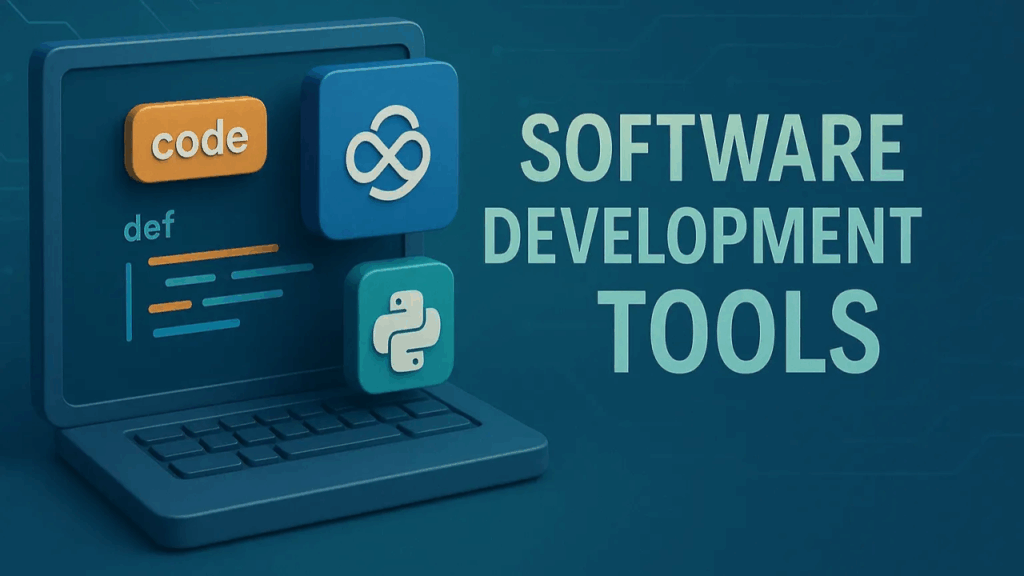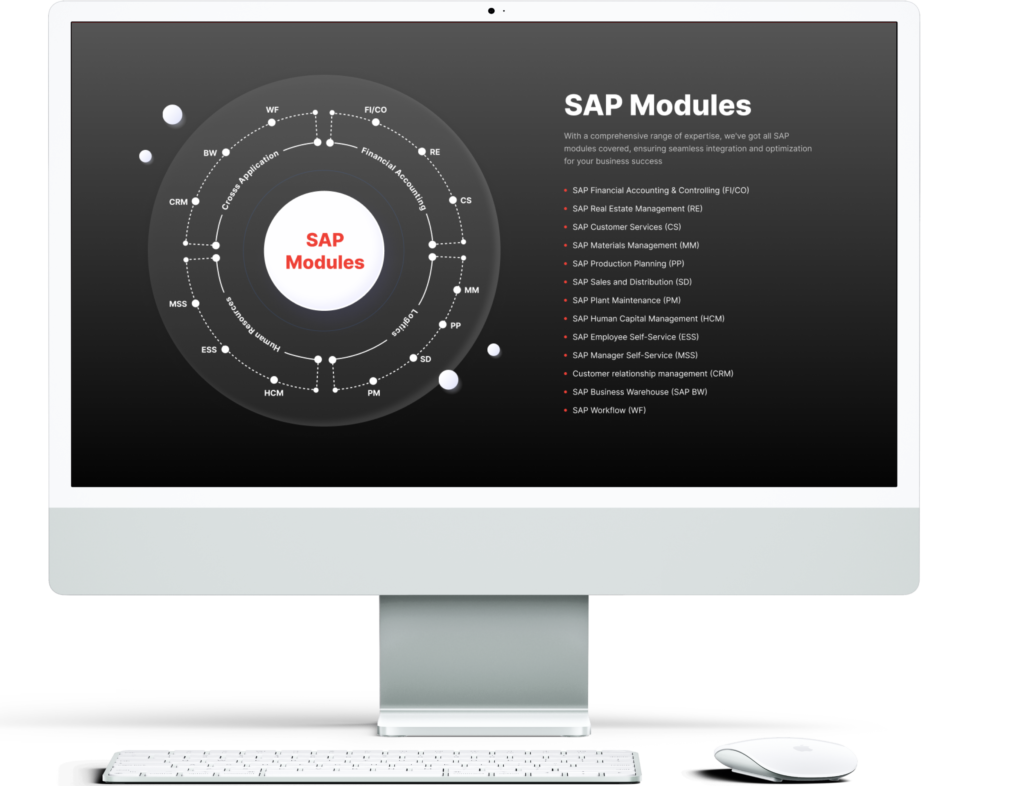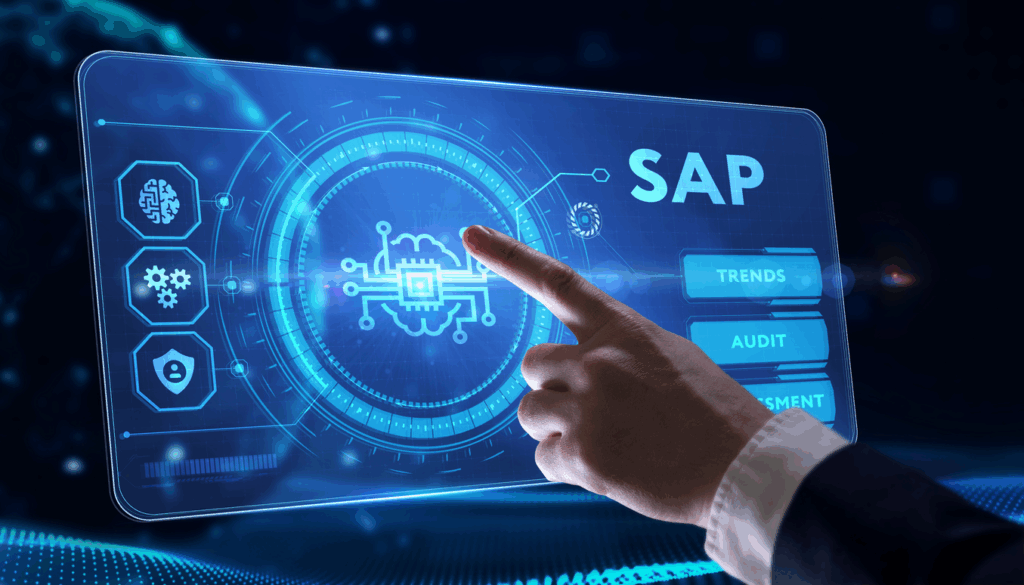As enterprises continue to accelerate digital transformation, SAP remains the backbone of mission-critical operations for thousands of organizations worldwide. But in 2025, the landscape of SAP development is changing fast, shifting from traditional on-premise systems to cloud-native, AI-driven, and DevOps-enabled environments.
For developers, this transformation means new tools, new workflows, and new opportunities to build smarter, faster, and more scalable applications on the SAP ecosystem.
In this blog, we’ll explore the top SAP development tools every developer should master in 2025 from foundational platforms like ABAP and SAP HANA to modern cloud tools and emerging trends. We’ll also share how Sphinx leverages these technologies to deliver cutting-edge enterprise solutions for global clients.
Understanding SAP Development Tools
SAP development tools are specialized software environments, frameworks, and SDKs that developers use to build or enhance SAP-based solutions. They provide everything from coding interfaces and testing environments to integration libraries and deployment pipelines allowing developers to work efficiently across both on-premise and cloud SAP systems.
Types of SAP Development Tools
Depending on the purpose and stage of the software lifecycle, SAP tools can be grouped into several main categories:
- Application Development Tools
These include environments like SAP Business Application Studio (BAS) và ABAP Development Tools (ADT), designed for coding, testing, and debugging SAP applications. They provide developers with modern IDE features, version control integration, and frameworks such as the ABAP RESTful Application Programming Model (RAP). - Database and Data Modeling Tools
Tools like SAP HANA Studio and the HANA Database Explorer allow developers to design, query, and optimize data models for real-time analytics. They are essential for building intelligent, data-driven business applications. - Integration and Extension Tools
Tại SAP Cloud SDK and related APIs help developers connect SAP S/4HANA and BTP services with external applications. These tools are vital for hybrid or multi-cloud environments, where seamless interoperability defines success. - Automation and Lifecycle Management Tools
Solutions such as SAP Cloud ALM, Jenkins, and CI/CD integrations enable teams to automate deployments, monitor performance, and maintain continuous delivery pipelines aligning SAP development with DevOps practices.
By understanding these categories, developers can select the right toolset for their use case whether building a new application, extending an existing one, or integrating SAP with other enterprise platforms.
Top SAP Development Tools in 2025
In 2025, the SAP development ecosystem is more powerful and integrated than ever. Developers can build, extend, and deploy enterprise-grade applications faster through modern, cloud-ready environments. Below are the four most essential SAP development tools every developer should know and master this year.

1. SAP Business Application Studio (BAS)
SAP Business Application Studio (BAS) is the next-generation cloud-based development environment designed to replace the legacy SAP Web IDE. Running on the SAP Business Technology Platform (BTP), BAS provides a modern, VS Code–like workspace tailored for developing SAP Fiori, SAP HANA, and full-stack business applications.
What makes BAS stand out is its built-in support for multiple programming languages (JavaScript, TypeScript, Java, and Node.js), and its container-based architecture, which lets developers customize and scale their development spaces on demand.
BAS seamlessly integrates with Git, MTA build tools, and Cloud Foundry, enabling developers to push changes directly to the SAP BTP landscape from prototype to production.
Key highlights:
- Cloud-native development environment accessible anywhere
- Predefined templates for SAP Fiori and HANA projects
- Seamless integration with Git, CI/CD, and SAP BTP services
- Intelligent code completion and debugging similar to VS Code
2. ABAP Development Tools (ADT)
ABAP Development Tools (ADT) bring SAP’s proprietary language, ABAP (Advanced Business Application Programming), into a modern IDE based on Eclipse.
Developers use ADT to write, debug, and test ABAP programs directly within SAP S/4HANA and the SAP BTP ABAP Environment (Steampunk).
ADT offers a full suite of productivity features from syntax highlighting and code templates và thực hiện thành công refactoring tools and real-time syntax checking. Most importantly, it supports the ABAP RESTful Application Programming Model (RAP), enabling developers to build cloud-ready, service-oriented applications with REST APIs out of the box.
Key highlights:
- Modern IDE with debugging and testing integration
- Full support for RAP and Core Data Services (CDS) views
- Built-in connection to SAP Fiori elements
- ABAP Git integration for version management
3. SAP HANA
SAP HANA is more than a database, it’s an in-memory data platform that supports both transactional (OLTP) và analytical (OLAP) workloads. It enables developers to process massive data volumes in real time, create predictive models, and embed analytics directly into business applications.
Through SAP HANA Studio, HANA Database Explorer, or integration with BAS, developers can design complex data models, calculation views, and stored procedures using SQLScript.
With native machine learning and AI integration, HANA empowers organizations to turn data into intelligence, a critical capability for modern enterprises in 2025.
Key highlights:
- High-speed in-memory data processing for real-time analytics
- Built-in support for machine learning and predictive algorithms
- Tight integration with SAP BTP and third-party BI tools
- Optimized data modeling and query performance
4. SAP Cloud SDK
Tại SAP Cloud SDK (Software Development Kit) is a powerful toolkit for building and extending cloud-native applications that integrate with SAP S/4HANA Cloud, SAP SuccessFactors, and other SAP BTP services.
It provides ready-to-use libraries for Java, JavaScript, and TypeScript, enabling developers to consume SAP OData and REST APIs efficiently. With the SDK’s authentication, error handling, and connectivity modules, developers can focus on business logic instead of boilerplate code.
The SDK also includes command-line tools và CI/CD pipeline templates, making it easy to automate testing and deployment in cloud environments.
Key highlights:
- Simplified connectivity to SAP and non-SAP systems
- Built-in security and authentication support (OAuth 2.0, JWT)
- DevOps-ready with CI/CD pipeline templates
- Compatible with Kubernetes, Cloud Foundry, and CAP (Cloud Application Programming Model)
Future Trends Shaping SAP Development Tools
As enterprises transition toward intelligent, cloud-driven ecosystems, the way developers build and manage SAP applications is evolving rapidly.

1. DevOps for SAP
Traditionally, SAP development followed long release cycles and manual deployment processes. But with the growing need for agility, DevOps has become a game-changer in the SAP ecosystem.
Modern SAP tools now integrate seamlessly with CI/CD pipelines and version control systems such as GitHub, Jenkins, or Azure DevOps. These integrations allow teams to automate testing, deployment, and monitoring, reducing human errors and accelerating time-to-market.
SAP has also introduced SAP Cloud ALM (Application Lifecycle Management) và SAP Change Management tools that support continuous delivery workflows specifically tailored for SAP environments.
Key advantages:
- Continuous integration and delivery pipelines for SAP apps
- Automated testing, transport management, and rollback support
- Enhanced collaboration between development and operations teams
2. AI-Powered Development
Artificial intelligence is transforming the SAP development experience. Modern SAP tools now embed AI assistants, predictive analytics, and automated code generation features to enhance productivity and code quality.
For example, AI can assist developers by suggesting optimized ABAP or SQLScript snippets, identifying performance bottlenecks, or even detecting potential security vulnerabilities during code review.
In SAP Business Application Studio, AI-driven extensions can provide context-aware recommendations, while SAP AI Core và SAP AI Launchpad help developers integrate intelligent models directly into enterprise applications.
Key advantages:
- AI-assisted code completion and debugging
- Automated performance optimization and quality checks
- Integration of AI/ML models into SAP business processes
3. Cloud-Native Extensions
The rise of SAP Business Technology Platform (BTP) và container-based architectures has made cloud-native development the new standard. Developers can now build modular, scalable, and portable extensions without disrupting core SAP systems.
By leveraging Kubernetes, Cloud Foundry, and CAP (Cloud Application Programming Model), developers create services that integrate seamlessly with SAP S/4HANA and external APIs. These cloud-native extensions support elastic scaling, fault tolerance, and faster updates essential for enterprise agility in 2025.
Furthermore, the SAP Cloud SDK và SAP Integration Suite make it easier to connect SAP systems with non-SAP applications, enabling organizations to innovate faster while maintaining system stability.
Key advantages:
- Scalable, containerized application architecture
- Seamless integration with SAP BTP and third-party APIs
- Continuous deployment with minimal operational overhead
4. Low-Code and No-Code Tools
In 2025, the demand for rapid application delivery has made low-code and no-code platforms an integral part of SAP’s ecosystem. Tools like SAP Build, SAP AppGyver, and SAP Process Automation empower both developers and business users to design and deploy applications with minimal coding effort.
These tools offer drag-and-drop interfaces, pre-built data connectors, and visual workflow designers, allowing non-technical users (citizen developers) to collaborate directly with IT teams. As a result, enterprises can respond to business requirements faster while reducing dependency on traditional coding cycles.
Key advantages:
- Accelerated application delivery
- Reduced development costs and technical bottlenecks
- Enhanced collaboration between business and IT teams
How Sphinx Uses Modern SAP Tools to Deliver Enterprise Solutions
Tại Sphinx, we harness cutting-edge SAP development tools to build scalable, data-driven, and future-ready enterprise solutions. Our approach blends cloud innovation, automation, and analytics to help businesses accelerate digital transformation efficiently.
Building Modern Applications with SAP BAS
We use SAP Business Application Studio (BAS) to design and deploy enterprise applications on the SAP Business Technology Platform (BTP). With CI/CD integration and container-based workflows, our developers ensure fast, consistent, and collaborative delivery across projects.
Modernizing Legacy Systems with ABAP Tools
Through ABAP Development Tools (ADT) and the RESTful Application Programming Model (RAP), Sphinx transforms legacy SAP systems into modern, service-oriented architectures. This modernization helps clients retain core business logic while enabling new cloud integrations.
Unlocking Real-Time Insights with SAP HANA
Our engineers leverage SAP HANA’s in-memory computing to build real-time dashboards and predictive analytics solutions. By turning data into actionable insights, Sphinx empowers enterprises to make faster, smarter business decisions.
Extending Cloud Capabilities with SAP Cloud SDK
Using the SAP Cloud SDK, we build cloud-native extensions that integrate SAP with external systems such as CRM, ERP, or IoT platforms. These integrations help clients achieve greater flexibility and scalability across their digital ecosystems.
Embedding DevOps and AI in Development
Sphinx applies DevOps practices và AI-driven automation to enhance testing, deployment, and code quality. This ensures every SAP solution we deliver is robust, adaptive, and optimized for continuous improvement.
Case Study: SAP Implementation for a Leading Vietnamese Bank

A standout example of Sphinx’s SAP expertise is its successful implementation project for a major Vietnamese bank. The client aimed to modernize its SAP ecosystem to better manage financial, HR, and operational processes that had become fragmented across systems.
Sphinx’s development team collaborated closely with the bank’s internal IT department to execute system change requests, create custom programs and reports, and integrate SAP ECC with non-SAP platforms. Leveraging ABAP Development Tools and modern integration frameworks, Sphinx ensured seamless data flow and enhanced system performance.
As a result, the bank achieved streamlined HR operations, faster financial reporting, and improved data consistency demonstrating Sphinx’s ability to deliver tailored, enterprise-grade SAP solutions that drive measurable efficiency and business growth.
Lời kết
As SAP technology continues to evolve, mastering the right tools is key to building agile, intelligent enterprise systems. At Sphinx, we combine deep SAP expertise with modern development practices to help businesses accelerate innovation and achieve sustainable growth in the digital era.




CEO - Son Le
OTHER BLOGS
Blogs
AI Driving Innovation: Key Impacts, Challenges and Market Trends
Artificial Intelligence is rapidly moving from a supportive capability to a central engine of innovation across modern enterprises. Its advancements in automation, generative modeling and real time analytics are redefining how organizations operate, scale and deliver value. As AI becomes embedded into products, workflows and strategic decisions, it is reshaping...
Xem thêmBlogs
Top 10 Countries for IT Outsourcing in 2026
IT outsourcing is becoming an increasingly popular strategy as businesses worldwide seek to accelerate digital transformation, reduce operational costs, and access specialized tech talent. With the rapid growth of cloud computing, AI, and software development demands, more companies are turning to global partners to stay competitive and scale efficiently. In...
Xem thêmBlogs
Transform Your Business with SAP Consulting Support
In today’s digital-first landscape, enterprise systems must evolve continuously to keep up with rising customer expectations, data complexity, and the demand for operational excellence. SAP plays a central role in this transformation, offering intelligent, integrated solutions that help organizations modernize their operations and drive long-term growth. However, SAP only delivers...
Xem thêmOTHER BLOGS
Our Sevices
IOT
SphinX offers cutting-edge IoT development services, seamlessly connecting devices and providing innovative solutions for a...
Xem thêmOur Sevices
Phát triển Blockchain
We are highly proficient in engineering reliable and secure blockchain technologies from the ground up,...
Xem thêmOur Sevices
PHÁT TRIỂN ERP & CRM
ERP & CRM development services that you need! Streamline business processes and enhance organizational efficiency....
Xem thêmOTHER BLOGS
Our Sevices
IOT
SphinX offers cutting-edge IoT development services, seamlessly connecting devices and providing innovative solutions for a...
Xem thêmOur Sevices
Phát triển Blockchain
We are highly proficient in engineering reliable and secure blockchain technologies from the ground up,...
Xem thêmOur Sevices
PHÁT TRIỂN ERP & CRM
ERP & CRM development services that you need! Streamline business processes and enhance organizational efficiency....
Xem thêm